I cannot see more than a few meters ahead of me. To my left, beyond some yellow tape that really isn’t going to stop anything falling over the side, is a sheer drop that’s depth is hidden by the thick cloud. I think it’s a long way down; a few kilometres back a digger was clearing a landslide and, like dropping a coin down a well, the debris takes a long time to make a sound after it is shunted off the edge. To my right is a wall of rock, meaning if you’re in a large vehicle and meet some oncoming traffic, there’s nowhere to go but back to the occasional passing place and, if that happens, you’ll hope you’re driver has been gifted with a good sense of spatial awareness. That was enough to stifle the temptation to thumb a lift.
I’m on my second day of Colombia’s ‘trampolin de la muerte’, a narrow road that crosses the Andes between the towns of Mocoa and Pasto and on the map looks like someone dropped some spaghetti. Its namesake comes from its width and the drop that awaits anyone who veers off the side and it is a close relative of the ‘death road’ in Bolivia, minus the swathes of tourists that visit. There are countless crosses and memorials all along the road to the people who didn’t bounce when they hit whatever lay below, through all the cloud.

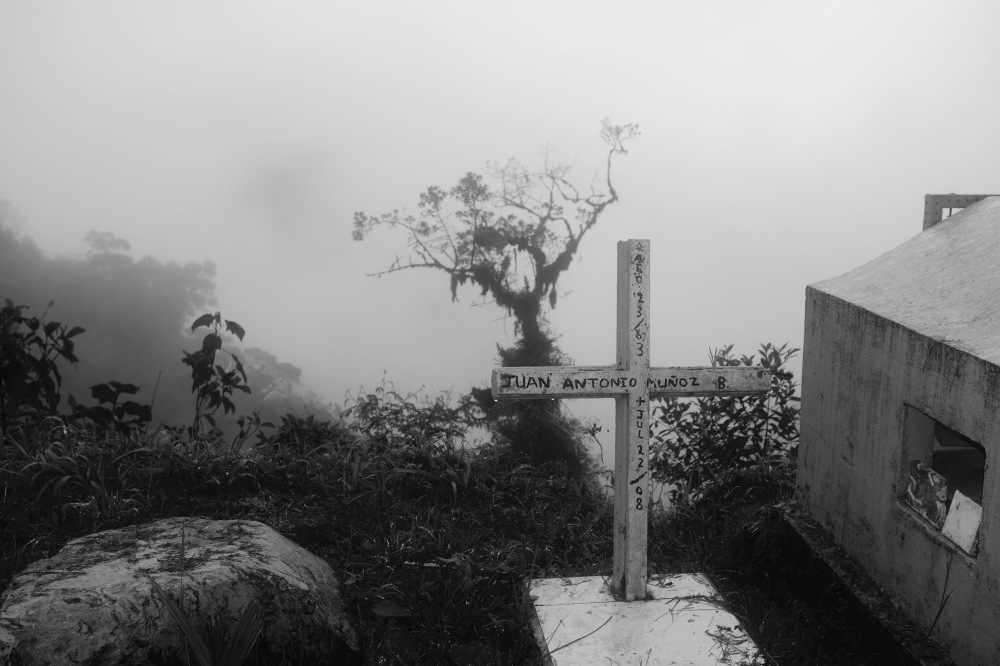

The day before I left Macoa, a low lying town that swelters in the heat you find anywhere in Colombia below 600 meters above sea level. The paved road ended, the gradient became steeper and the road snaked up towards the pass, 1,200 meters higher up into the whiteness. Soon the edge of the narrow road that is often only as wide as a car, gets more and more precarious. Throughout the day the rain gets heavier and visibility comes and goes with the passing clouds. At one point the sun comes out and I enjoy the ten minutes it shines to rest and dry off; it’s otherwise too wet and cold to stop longer than the time it takes to eat a cereal bar or a banana.
I come to a notorious ford I read about from other blogs that can be a bit of a pain to cross when it has been raining heavily, when its current can be so strong that any fall would see me swept over the edge. Mercifully, I’m able to push my bike through and come back for my shoes and bags with electronics (I don’t trust my legs to keep me vertical even when there isn’t a river to wade through). There were about 5 other fords but these were all rideable.

After about 5 hours of mashing up the hill, I reach the top and find a stall selling the closest things I can describe as Colombian scotch eggs and sweet black coffee. I ask the owners if they know a place I could camp. They ask me to wait and I hear him making a phone call. My Spanish isn’t good enough to hear exactly what the boss is talking about other from the fact that they’re talking about me. After the call, he comes to me and says there’s nowhere to camp (heartbeat increases), but there’s a room in the nearby building I can use instead (heartbeat relaxes). I settle for this option with a hell of a lot of gratitude. My standards for accommodation aren’t high these days and, in the increasingly heavy rain, anything with four walls and a roof is a gift. The room I’m led to is bare except for a plastic table, a half-built bunk bed and is lit by a solitary light bulb. Out of the rain, this is pure luxury. When I asked how much they wanted for the night, the man smiled and said nothing. This road is popular among tourers and I’m sure these people are used to tired and wet visitors on two wheels, so I expected them to be savvy and get a little indirect income from the shelter, but once again I forget that Colombian hospitality always trumps opportunism. The rain got heavier that night, every time it fell harder on the tin roof above me, I smiled a little more, cosy, dry, and counting my blessings.
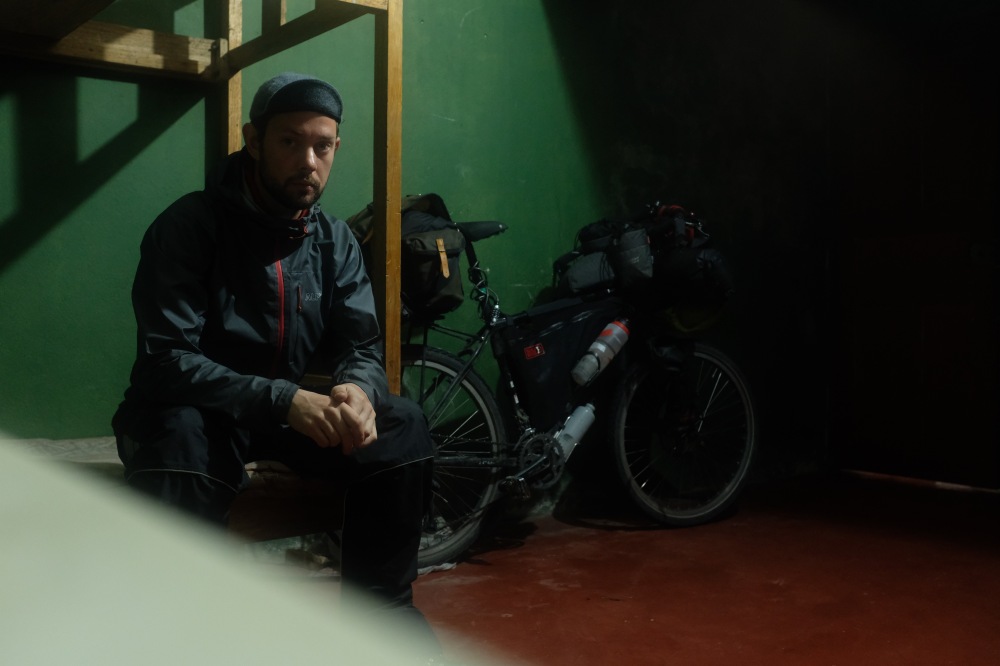
It’s not long down the road the next day before I see the damage of the previous night’s rain, when I encounter the first of what would be many landslides blocking the road. This was easy enough to push my bike over, my clothes and shoes were still wet from the previous day so what difference would submerging them in a puddle do? The next one, about 500 meters down the road, proves a bigger hurdle. I meet a guy on a motorbike on the road and together we’re able to get both our bikes through the knee-deep mud and debris. As more bikes arrive, we end up turning into a very muddy human chain, hauling bikes over the blockage in each direction. After a job well done, the motorbikes zoom off and I remember I’ve still got another 900 meters to climb; I probably shouldn’t have been so enthusiastic to help. I wash the mud off my clothes in one of the waterfalls that cascades onto the road from the cliffs above and get going.
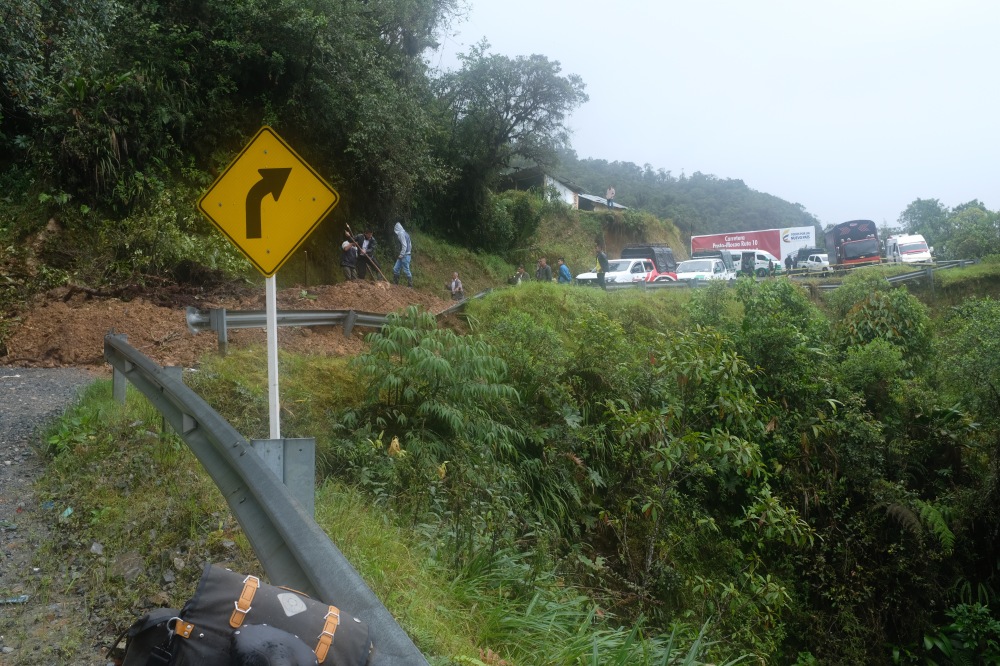
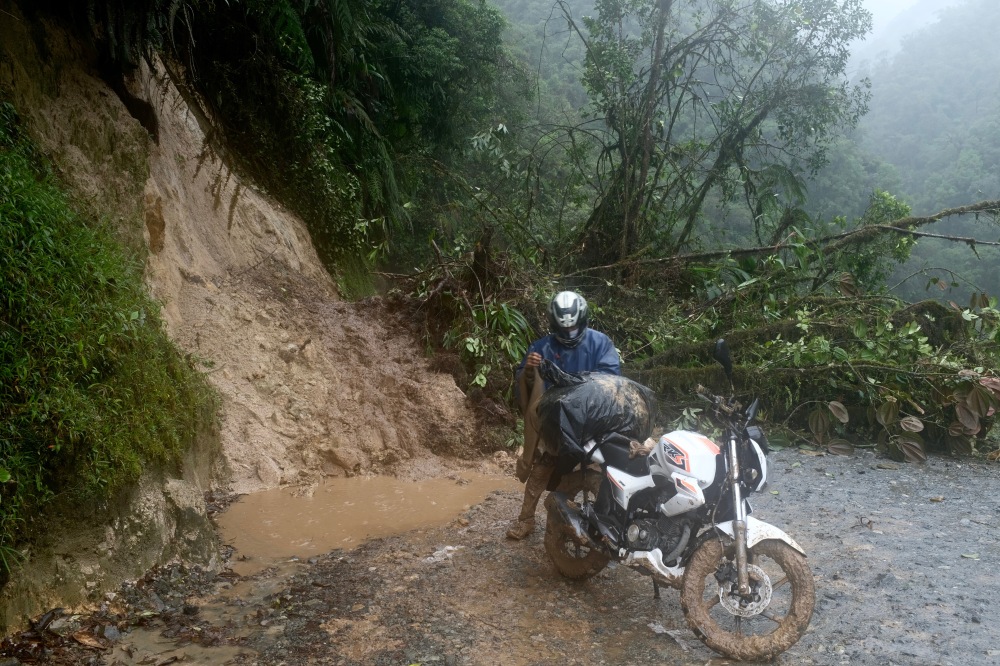
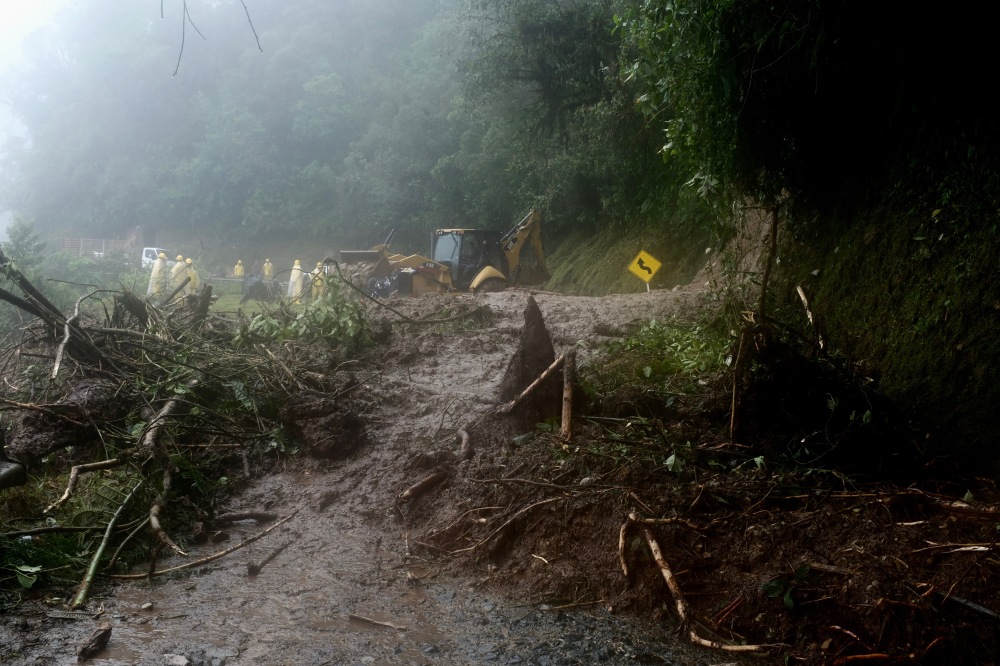
The third landslide a little further on was being cleared by a digger and the workers wouldn’t let me push my bike past. By this point I am saturated and it didn’t take long before I start shivering. It’s too wet to get out my warmer clothes so I just had to stand around occasionally trying to do an occasional set of subtle star jumps while the workers slowly shifted the debris off into the grey abyss below. Coin, well, etc.
It took an hour to clear the road but I quickly warmed up as the road began to climb that would take me out of the wilderness and back into civilisation and hot showers. It was a long climb, fuelled by bananas, the odd spoonful of peanut butter, and dulce de guayaba: a sweet jelly made of Guava. Once again I was too wet to stop and take a proper break, so stopped just long enough to eat whatever it was I needed to do and pressed on.
Visibility rarely reached beyond my extended arm throughout those two days, but, every time the clouds parted, they revealed a landscape of green mountains and deep chasms boasting a view of at least half a dozen waterfalls. It must be an amazing place on a clear day. The views you do get when visibility is good is why I did the ride in the first place. But things have a way of working out differently to what you expected.
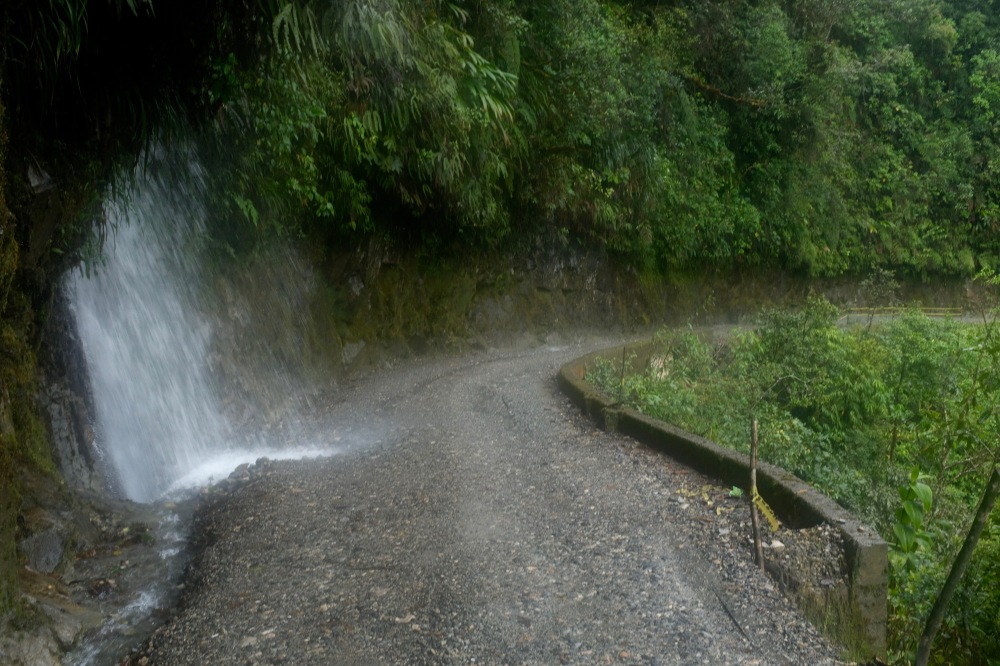


Later in the day, a hotel owner opened his door to meet a man covered from head to toe in mud with a bike in a similar condition. He apologies and lied that his hotel was full. I don’t blame him, I wouldn’t have let me in in that state. He pointed me in the direction of a hotel that had an outside courtyard I was able to hose my bike (and self) down before setting soggy feet into a hot shower. It’s odd that the one thing you want after being in the rain for two days is to step in a shower, but that’s what my priorities dictated.
The dirt road ended in the village of San Francisco, but the climbing didn’t. The following day I’d go up to 3,300 meters, to the alien planet ecosystem of the Paramo (more on that next time), before dipping down into the town of Pasto, where I needed a day off, a birthday beer, and a rest.
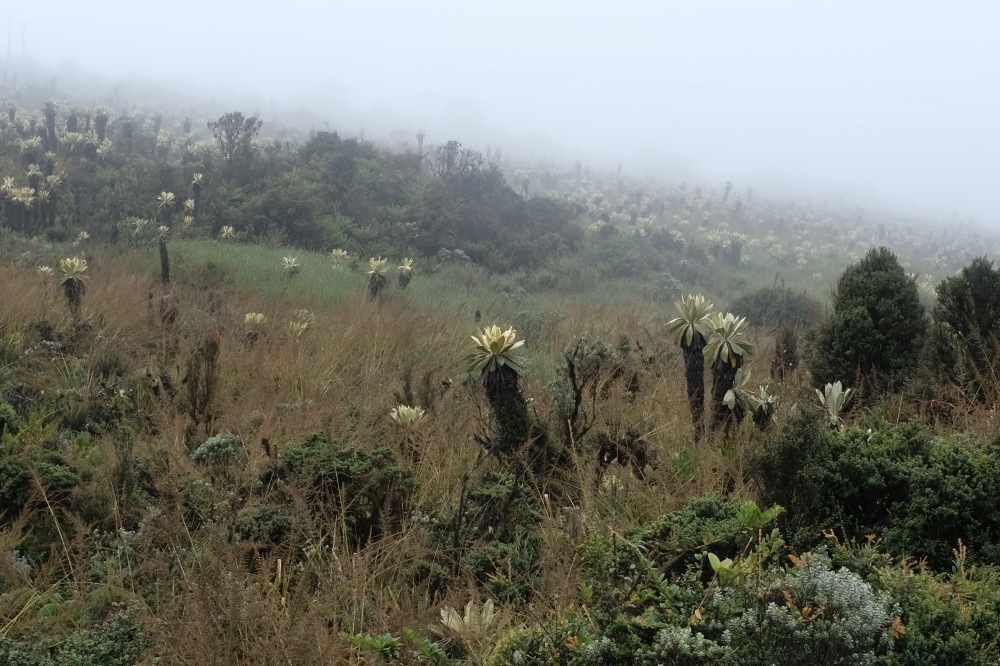

It had been a difficult ride and had been somewhat disappointing, with the weather and zero visibility. It’s largely been a failure of my high expectations. That’s the problem with expectations, they can never be met. Expectations are more or less your internal Instagram feed that conjures up perfect scenes of epic roads and stunning campsites in your mind’s eye. It’s never raining in a place you’re looking forward to visiting until you actually get there. Then it becomes what you make of it. Even though the weather was a letdown, it was a challenge beaten and the sense of satisfaction you get for getting through it is far better than the monotonous days on the saddle I had during the first week out of Bogota, riding south along the flat and hot Rio Magdalena valley (that’s the massive gap in the narrative between leaving Bogota and Mocoa, by the way).
Most importantly, it’s helped me find my climbing legs after a while off the bike. And the Andes are just getting started.

Great read as always Nick. Another challenge ticked off!!
LikeLike
well done Nick you are amazing xx
LikeLike
Oh dear, I actually FELT cold and wet just reading your words. But you do go for the ‘big adventure’ roads…. I wish you better luck with the weather as you travel onwards.
LikeLike